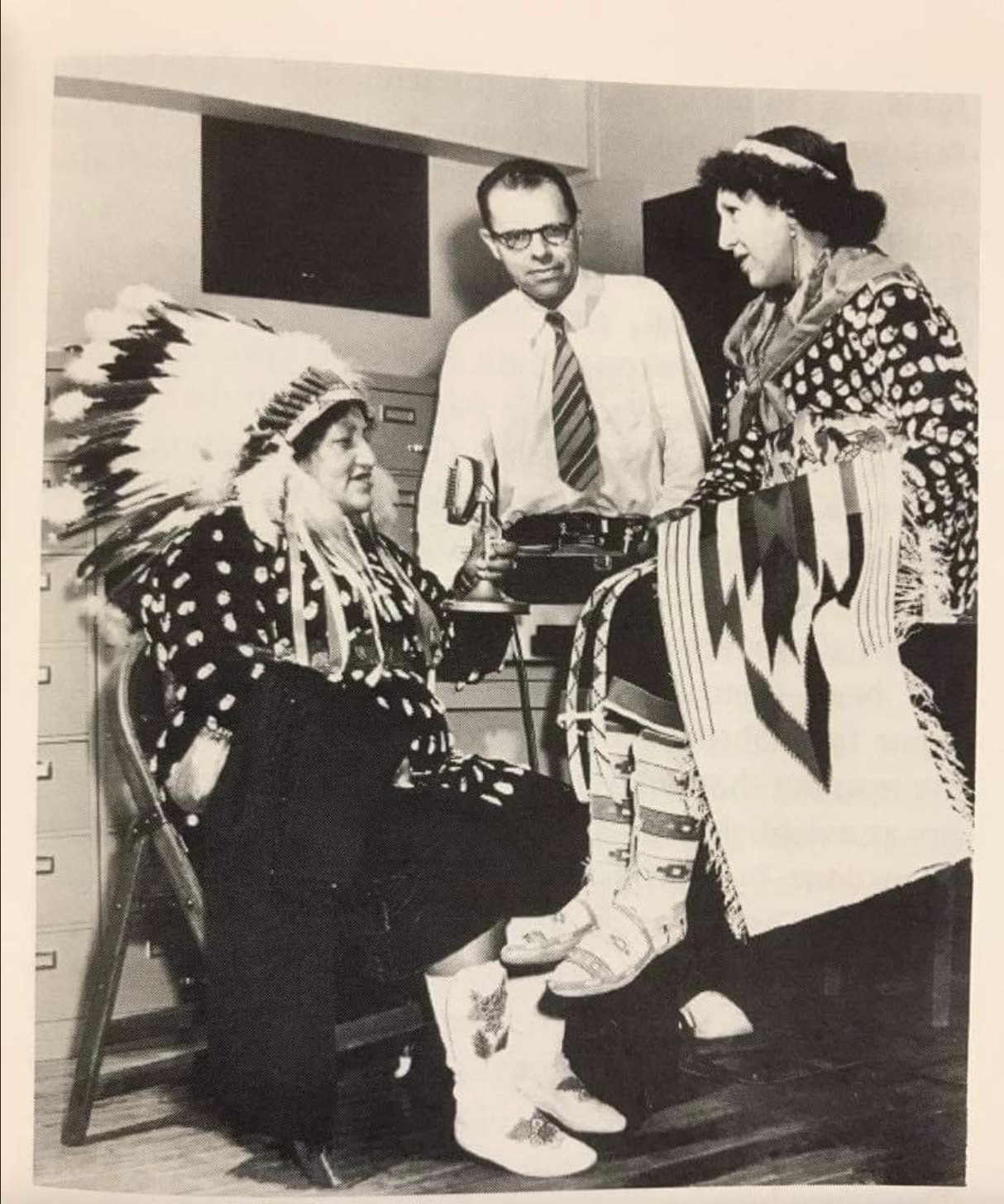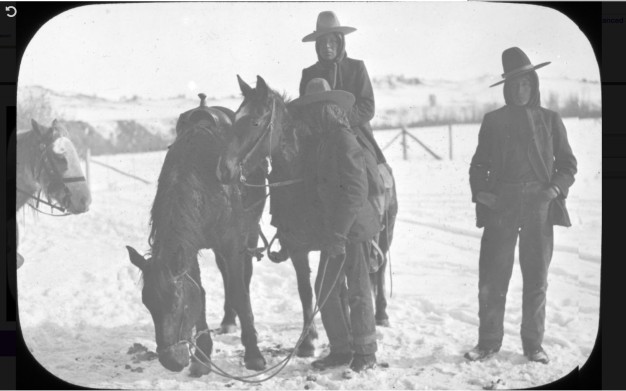Biscuits and Buffalo: The Ongoing Reinvention of American Indian Culture
John White Man Runs Him, on horse, Carson Yellow Tail, and possibly Leo Medicine Crow with three horses in snow. Photograph taken by William A. Petzoldt, ca. 1903-1925. Photo courtesy of the Buffalo Bill Center of the West. Petzoldt Collection (Ms 095).
The American Philosophical Society’s collections are renowned, to state the obvious, but the institution nevertheless surprised me by its possession of just the kind of sources that are central to my project. The APS holdings include personal recollections of everyday life of Crow Indians of Montana.* Not in the era of Lewis and Clark, as one may expect from the APS, but from the 20th century. Who knew?!
I spent August 2022 as a Short-Term Mellon Foundation Research Fellow to research my book Dried Buffalo and Apple Pie: The Ongoing Reinvention of the Crow Indian Community. The book is about how American Indians in the reservation era have created new strategies and collaborations, while drawing on deeply rooted values and customs, to affirm their own Native identity and relevance in a globalized world. It narrates stories about how Native people have thrived, not just before but after they moved to reservations, and how they have done so in collaboration, not just in conflict with non-Indians. The book’s main point is that Indians survived by figuring out how to make a living, what to make for dinner, and who to work, eat, and play with on a daily basis. Scholars have frequently studied Native American empowerment in the 20th century through their political activism and individual accomplishments off the reservation, but these day-to-day activities and decisions on the reservation are just as key to Indian survival and their ability to thrive.
I have learned about these stories of success and unlikely collaborations from doing research and living on the Crow Indian reservation in Montana on and off for over 18 years. Memoirs, local newspapers, and family photographs, versus government records, have proven particularly helpful to illuminate the complex stories that defy the common depiction of Indians as defeated and at odds with non-Indians.
At the APS, sources both confirmed the biases I have noticed among researchers of Indian communities and provided new insights from Crow people themselves. I was looking forward to delving into Henry Old Coyote’s and Barney Old Coyote, Jr.’s “Crow Stories,” because the brothers were leaders of their community—accomplished educators, and rodeo performers both. While this collection is valuable because it documents ancient stories of the Crow people, it offers nothing about Crow life during the last century and a half.
In one story, the brothers narrate the exploits of Spotted Horse, who was a dishonored warrior in the early 19th century. But the men are mum about Spotted Horse’s son and namesake who, in the early 1900s, was a strong defender of Crows against corrupt government agents and a successful wheat farmer. Perhaps the Old Coyotes preferred to avoid discussing their own lives or life on the reservation, or perhaps researchers themselves encouraged the men to focus on pre-reservation times, which has been common among scholars. Either way, it is typical for the lives of distant ancestors to overshadow living, breathing Indians, even, in this case, an ancestor that was disgraced within his community.

Yet daily life in Montana in the 20th century is exactly what Dorothea V. Kaschube delved into when she and other University of Indiana graduate students interviewed Henriette Pretty On Top in the 1950s. The purpose of the interviews was to document the Crow language, but the female anthropologist developed a personal connection with Pretty On Top. Kaschube asked her questions about everyday life, and Pretty On Top’s replies describe gift exchanges with White neighbors, interactions with local White ranchers who leased her land, and encounters with Black and Mexican people who lived on the reservation. I am grateful to APS for its renewed efforts to document the lives of Native Americans, and for helping me to bring these more complex stories about Crow life on the reservation to light. Here is a link to Pretty On Top’s obituary.
* Note on Terminology: Apsáalooke ("Children of the large-beaked bird") is the appellation for the Crow people when spoken in the native language. As Crow elder Bill Yellowtail explained to me, when speaking in English people commonly refer to themselves as Crow and Indian. I follow their lead here.

